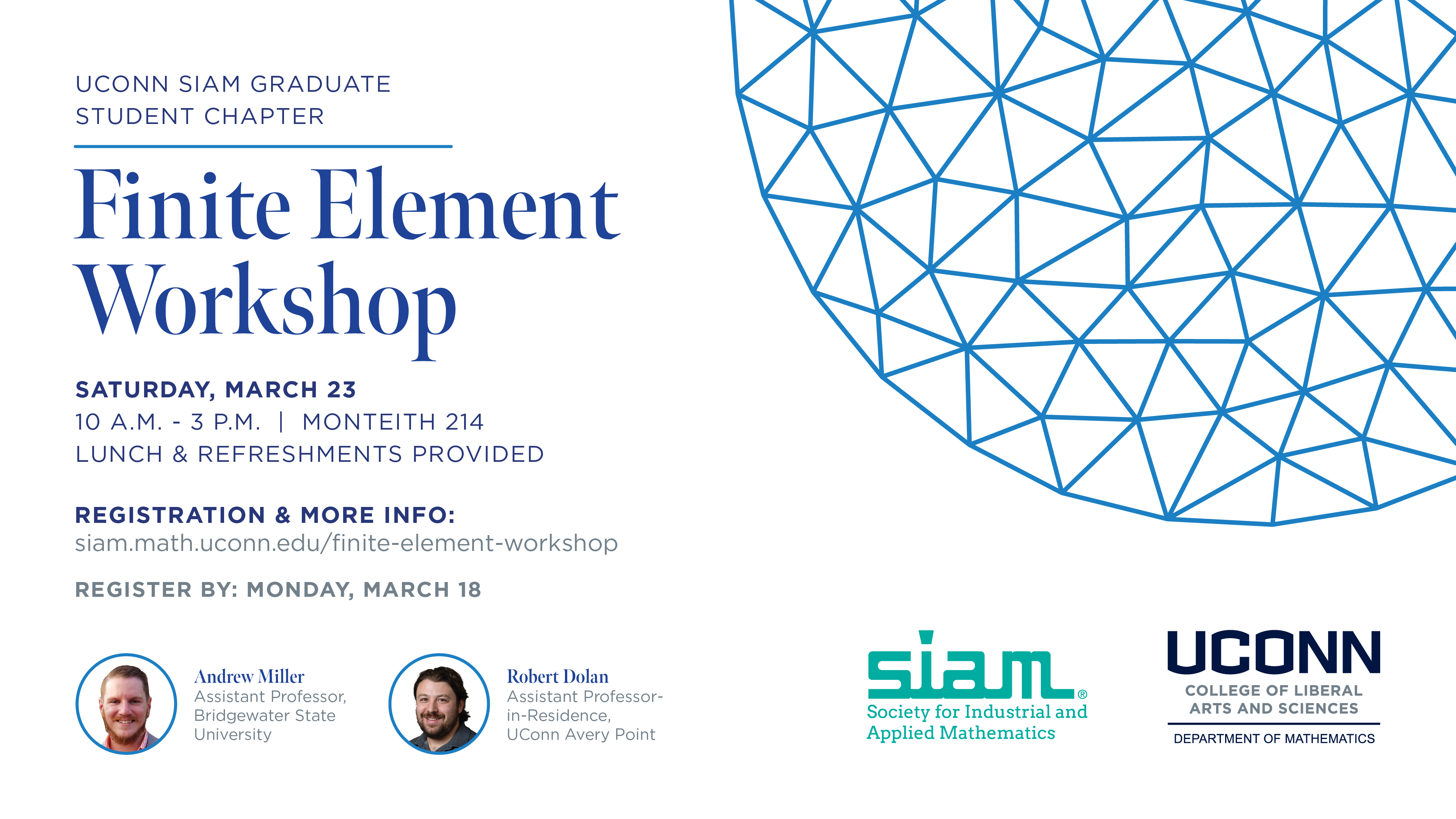
Details
When: March 23rd from 10 am to 3 pm
Where: Monteith 214
This will be an introductory workshop for the mathematically inclined. Lunch, coffee, and refreshments will be provided.
Schedule:
9:30-10:00 Breakfast
10:00 – 10:50 Kim’s Talk
11:10 – 12:00 Erik’s Talk
12:00 – 1:00 Lunch
1:00 – 1:50 Bobby’s Talk
2:10 – 3:00 Andrew’s Talk
Key-note speakers:
Dr. Bobby Dolan
“Finite Element Methods and Fluid-Fluid Stability”
Abstract: The accurate prediction of the states of the atmosphere and ocean has proved to be a challenge for both mathematicians and scientists alike. One main point of interest is method stability, which has been an elusive issue for high-order time integration of two fluids coupled across an interface. The design of methods is complicated by additional properties like conservation of fluxes between fluids and multirate time stepping that are needed for applications. In this talk we will present the equations for a model of two coupled fluids with natural heat convection, along with their variational formulations, and describe how the problem is discretized in space and time. In particular, we will discuss how finite elements are used in space and outline how sufficiency of the stability
indicator is proved.
Dr. Andrew Miller
“The Green’s Function and an Exploration of PDE Analysis for the Finite Element Method”
Abstract: It is well known that the classical Green’s function for an elliptic PDE on a bounded domain Ω is non-negative and there exists numerous results related to this fact. In the Euclidean setting for example, if the boundary data for Ω is positive, then harmonic functions are non-negative and there exists a Harnack Inequality on a connected open subset of the domain. For surface PDEs, a manifold M is said to be 2-hyperbolic if there exists a symmetric positive Green’s function. This is then equivalent to the existence of nonconstant positive 2-superharmonic functions on M and allows for the establishment of a Hardy-type Inequality. A central focus for research in finite elements asks if classical results can be extended to the discrete setting.
In this talk we will cover an overview of established results as well as conditions in which they fail in two and three dimensional Euclidean space. Additionally, we will provide a brief look into a Surface Finite Element Method and discuss open problems in the area.
Additional Talks
Finite Element Workshop Registration